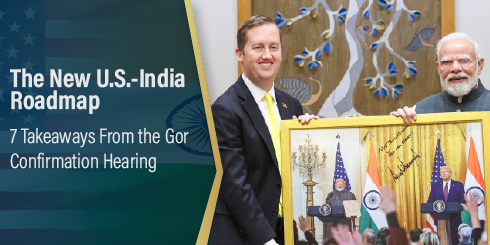Expert Casting: MES’s Key Role in the Starlink Mission
MES has faced many challenges over the last decade. Regardless of whether those challenges derived from growing the business or overcoming the supply chain challenges caused by the pandemic, this company has been able to look at any trial and rise to the occasion. Recently, MES was called to rise to help a company many may have heard of, SpaceX. SpaceX was created by Elon Musk with the mission to “revolutionize space technology, with the ultimate goal of enabling people to live on other planets.”
If you go on the SpaceX website, you will see multiple projects regarding space flight missions. Yet the company does not only focused on space travel but also on global connection. More specifically, SpaceX has an internet service called Starlink. When speaking with Bhavin, one of MES’s advanced supply developers, he explained that Starlink was created to bring internet to third-world countries and make internet use more accessible to everyone. Founded in 2015, Starlink has gone through many iterations regarding how the product would be engineered, manufactured, and transported efficiently.
MES is proud to say that they were a part of Starlink’s production journey. The company became involved in the Starlink mission in 2021 when some work from MES’s marketing team caught the attention of product developers and purchasers at SpaceX. One purchaser, during a review meeting, mentioned knowing someone through his network who worked at MES. By this point, Starlink was on version 2 (V2) or version 3 (V3) of the product and was sourcing out of Taiwan. However, at the height of the pandemic, SpaceX wanted to begin sourcing closer to home. This is where MES comes in. We were tasked with managing the manufacturing and transportation of the Starlink components from suppliers closer to America.
Mast Production
MES’s Starlink journey begins with a long extrusion, a 12-foot tube supplied from a partner in Mexico. We worked with a high-capability extruder in Mexico to develop the correct dimensions, accounting for paint thickness, outer diameter (OD), inner diameter (ID), and avoiding lapping of the material, which would create rough surfaces on the tubes being extruded to become the mast.
These tubes were then transported to MES’s machine shop in Mexico, where the real magic occurred. To ensure a smooth service on the part, MES invested in advanced machinery, specifically a dual spindle, dual turret CNC lathe with an auto cartridge feeder (model Puma TT 2100SYYB) from Doosan, a Korean manufacturer of equipment. Upon arrival, the tubes were loaded into a magazine rack capable of holding an hour’s worth of raw material, ensuring a steady and automated feed into MES’s CNC machines.
The machining process is notably advanced, employing a dual spindle, dual turret lathe. In this system, while the part spins, the tool remains stationary, but MES’s machine features active tooling. This capability allows one side of the machine to start machining one end of the mast and then seamlessly pass the part to the other side of the machine, where a different machining process continues. This hand-off mechanism enables simultaneous machining of two parts, significantly boosting production efficiency and reducing variability.
To meet the project’s rigorous demands, MES developed a custom broaching tool to put in six tight-tolerance notches on the edge of the mast, which connects to the motor system that allows the pivoting of the Starlink Dish. This innovation eliminated cycle time and concerns about inconsistency from notch to notch on that end of the mast.
After machining, the parts underwent a polishing operation before being packaged and sent to the painter. The previous supplier used plastic trays to ship the parts, fitting about five horizontally laid parts per tray and only managing 20-30 parts per box. MES redesigned this system, implementing a vertical grid arrangement that accommodated 60 masts per box. This redesign not only saved time and resources but also significantly reduced shipping costs, a crucial improvement for SpaceX.
The Foundation Production
Alongside the mast production was the foundation of the product. The production of the X-shaped foundation began with raw material in the form of aluminum bars, specifically the A380 alloy, a commonly used type of aluminum. The manufacturing journey starts with the supplier in Mexico, where the bars were melted in furnaces and cast into the desired shape.
Following the casting process, the parts underwent a trim die operation. This step was essential for removing any excess material and ensuring the surface was free of bumps and grooves, a critical requirement for SpaceX engineers and supply chain managers. After trimming, each part moved on to a polishing operation, which, although time-consuming, was need to achieve the desired finish and quality.
Challenges and Innovations in Painting
One of the major hurdles MES faced during this project was finding a reliable supplier to handle the painting process. The original paint used was Akzo Nobel custom acrylic paint, known for leaving residues in the paint line, which acted as contaminants when painting other parts with different systems. To accommodate this, MES had to negotiate with the selected painter to use the custom paint, which involved dedicating multiple weekends per month to purge the entire paint line after each use to support our needs.
Ultimately, our selected painter developed an entirely new paint line to support this acrylic paint and added a robotic paint spray system to improve coverage on the outside and inside of the mast. This significant improvement to the process reduced the amount of manual intervention required, ensuring a higher quality finish.
Continuous Improvement and Communication
Throughout the entire project, MES demonstrated its commitment to continuous improvement and problem-solving. Multiple programming iterations were required based on continuous communication with our customer and our programming team to get the right shape of the windows that interact with buttons inserted into the mast when assembled.
Christian Lopez, Project Manager at Metrics Mexico, was instrumental to the project’s success. His leadership was critical in maintaining the tight tolerances required for the castings and effectively communicating any customer changes to ensure the product met exact specifications. Christian’s tireless work through various challenges showcased his dedication and perseverance.
Similarly, Bhavin, the Program Manager, played a key role in aligning MES’s capabilities with SpaceX’s expectations. His efforts ensured that the team at MES consistently met SpaceX’s high standards, often requiring multiple adjustments. For instance, the mast underwent three rounds of revisions, while the X component required five to six rounds.
Conclusion
Over the course of two to three years, MES worked closely with SpaceX, continuously refining their processes and meeting stringent requirements. Despite SpaceX’s preference for in-house production from the outset, MES proved to be a valuable partner by demonstrating flexibility, resilience, and a commitment to finding solutions to problems that arose.
The collaboration between the two companies highlights the importance of learning from failures and leveraging those experiences to improve and innovate. MES.’s involvement in the Starlink project reflects the company’s dedication to excellence and its capability to rise to any challenge. Through innovative processes and a relentless focus on quality, MES has significantly contributed to SpaceX’s mission of revolutionizing space technology and connecting the world through the Starlink satellite internet service.




